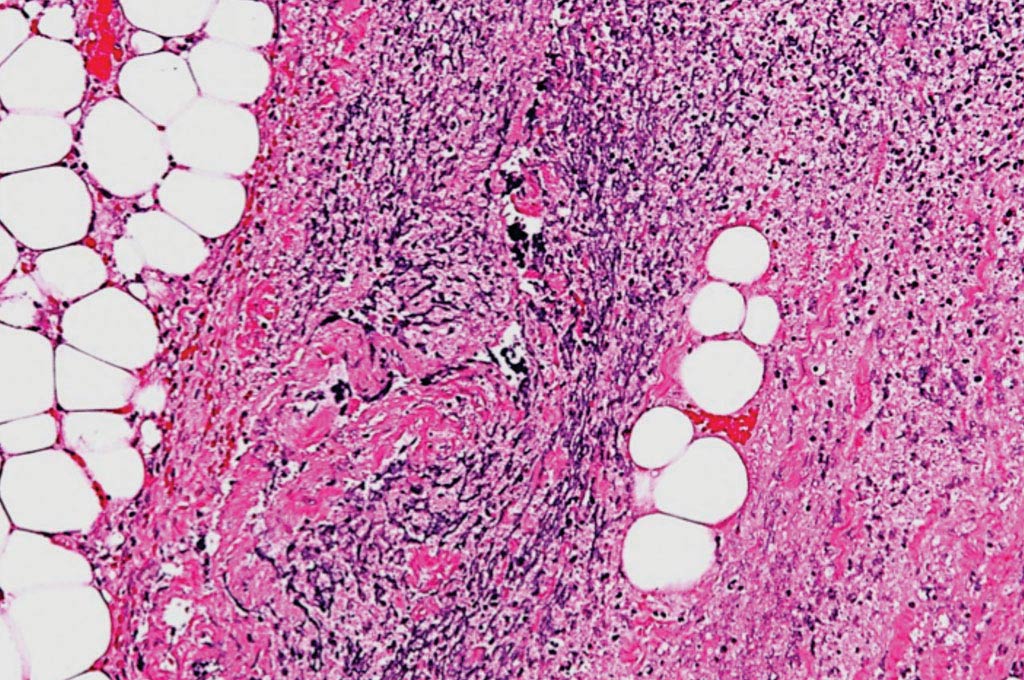Prognostic Factors Evaluated for Synchronous Multifocal Necrotizing Fasciitis
By LabMedica International staff writers
Posted on 14 Dec 2016
Necrotizing fasciitis is an infection caused by bacteria and it can destroy skin, fat, and the tissue covering the muscles within a very short time. The disease sometimes is called flesh-eating bacteria and when it occurs on the genitals, it is called Fournier gangrene.Posted on 14 Dec 2016
Necrotizing fasciitis (NF) is an uncommon deep soft tissue infection characterized by a rapidly spreading necrosis of superficial fascia and subcutaneous tissue and although typical NF involves primarily a single site, some recent studies report the concurrent involvement of multiple sites.

Image: A histopathology of necrotizing fasciitis of the skin showing amorphous grey or pink material and neutrophils (Photo courtesy of Nephron).
Medical scientists at the Chang Gung Memorial Hospital (Puzi City, Taiwan) enrolled 18 patients,14 men, four women with a mean age of 59 years, diagnosed with and treated for synchronous multifocal necrotizing fasciitis (SMNF) at their hospital from January 2004 to December 2012. SMNF was defined as a multifocal presence of necrotizing fasciitis (NF) in different extremities at the initial visit. It was defined using surgical findings: the presence of grayish necrotic skin, subcutaneous fat and fascia, no resistance of normally adherent fascia to digital blunt dissection, and a purulent discharge resembling foul-smelling dishwater. Histopathological tissue specimens were obtained to confirm the diagnoses.
The team revealed that survivors had a higher rate of leukocytosis (greater than 12,000/μL) than did non-survivors (83% versus 17%). The prevalence of thrombocytopenia (less than 150,000/μL) was higher in non-survivors than in survivors (92% versus 17%). Bacteremia occurred in 50% of survivors and in 83% of non-survivors. The levels of serum hemoglobin, C-reactive protein, and albumin were not significantly different between the two groups. Gram-negative bacteria were predominantly isolated in both groups, especially Vibrio vulnificus. There was no significant difference in bacterial species between the groups. The overall mortality rate of the patients with SMNF was 67%.
The authors concluded that the incidence of SMNF of the extremities was 8% for all subtypes of NF. Male sex, bilateral lower limb involvement, and marine Gram-negative bacteria were the most frequently found factors in SMNF. The mortality of SMNF was as high as 67%, which was more frequently associated with initial thrombocytopenia and bilateral lower limb involvement. The study was published in the December 2016 issue of the journal Infection.
Related Links:
Chang Gung Memorial Hospital














